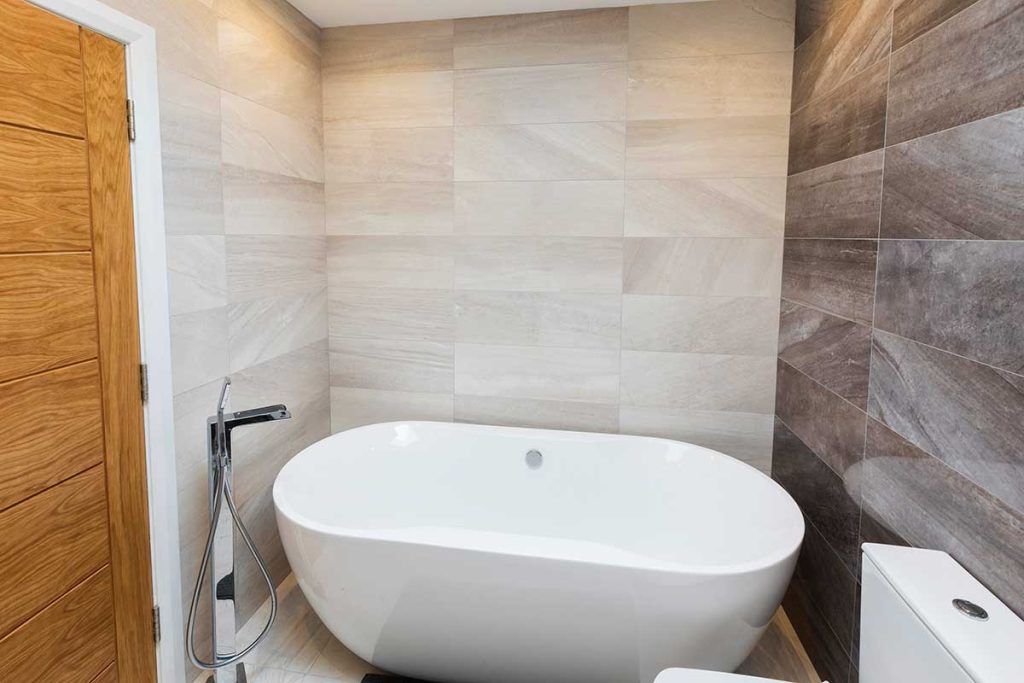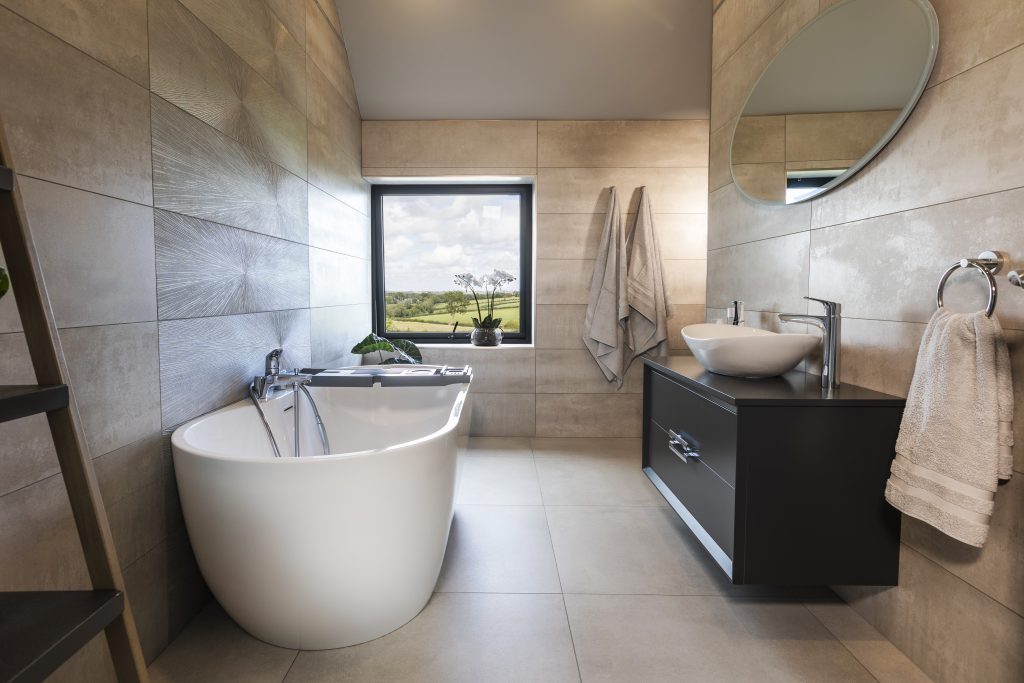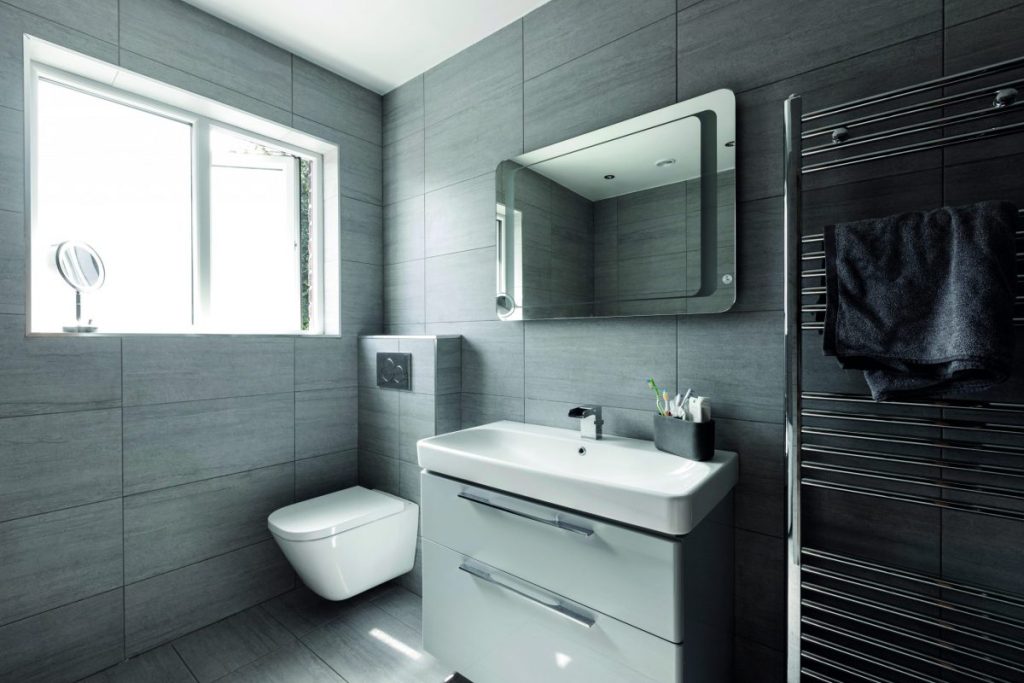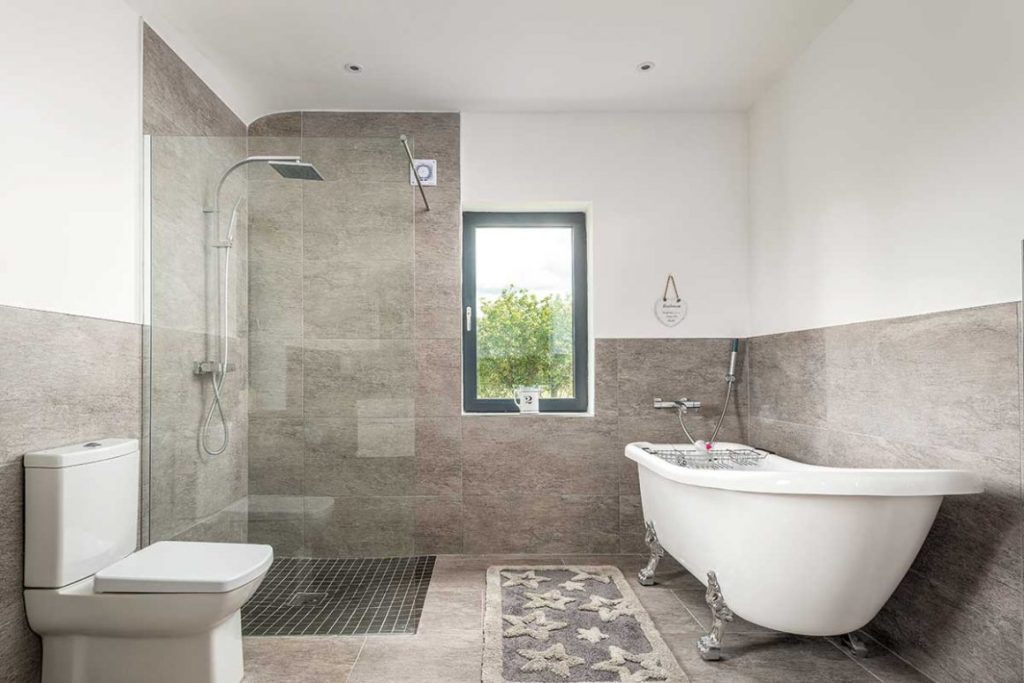When it comes to transforming your bathroom, there’s a multitude of choices to make. From selecting the right sanitaryware to ensuring water pressure matches your shower, every decision impacts the functionality and aesthetics of your space. In this comprehensive guide, we’ll break down the essential aspects of plumbing a bathroom, ensuring it’s not only functional but also aesthetically pleasing for your Irish home.
The Importance of Sanitaryware
Sanitaryware, including basins, baths, showers, toilets, and accessories, forms the backbone of any bathroom. While trends may come and go, white sanitaryware remains a popular choice for its timeless appeal. Its neutrality allows you to experiment with color schemes through flooring, wall finishes, towels, and accessories. However, the style and material of your sanitaryware play a significant role in determining your bathroom’s overall look and feel.

Basins
Your choice of basin can significantly impact the visual and tactile aspects of your bathroom. Basins come in various styles and fixing options, each with its unique characteristics and price ranges.
- Vanity Basins: These basins sit within a unit, providing a clean and organized look to your bathroom. Prices can range from under €/£100 to €/£600 on average.
- Full Pedestal Basins: The most common type, these basins are supported by a column-like structure beneath. They offer a classic and timeless look.
- Half Pedestal Basins: These basins have shorter columns and are wall-mounted, creating a modern and minimalist appearance.
- Countertop Basins: Basins that sit on a counter or worktop, offering a contemporary and customizable design option.
- Wall-Mounted Basins: Ideal for a sleek and minimalistic look but require structural support during installation.
- Cloakroom Basins: Compact options starting at 360x270mm, perfect for smaller spaces.
- Vanity Unit Combinations: Combining basins with vanity units, these offer both storage and functionality, with prices varying based on construction and design choices.
Baths
Choosing the right bath is crucial, as it often serves as the focal point of the bathroom. The primary choice here is between free-standing and insert baths, each with its unique characteristics and considerations.
- Insert Baths: These are fixed against at least one wall and often come with acrylic paneling to hide the sides. They are practical and versatile.
- Free-standing Baths: These baths are statement pieces, available in both modern and traditional styles. They don’t typically have tap holes, so you’ll need to decide between floor or wall-mounted taps.
- Room and Installation Considerations: Keep in mind that free-standing baths require more space and are often heavier, necessitating structural considerations and careful measurement to ensure they fit through doorways and stairwells.
- Size Options: Most baths are 1700mm long, but smaller options (1500mm) and shower baths with wider showering ends (around 850mm) are available.
- Shallow Water-Saving Baths: These are 430mm deep compared to the standard 500mm, promoting water conservation.
- Corner Baths: These can be visually appealing but require adequate space to avoid making the bathroom feel cramped. Tapered baths are an option for tight spaces behind inward opening doors.
- Waste Pipe Placement: Consider the placement of the bath’s waste pipe, as it can limit your bath options if not decided early in the installation process.
- Variety of Bath Shapes: Apart from the standard options, you can choose from whirlpool baths, easy access baths, P-shaped, L-shaped shower baths, and more, with prices ranging from €150/£100 to high-end models.
- Scandinavian Style Sauna: If you have a large bathroom, consider adding a sauna. Plan ahead for electrical connections by a qualified electrician during the first fix.
- Materials: Baths are available in various materials, including acrylic, cast iron, fibreglass, ceramic, stone resin, copper, and even marble. Acrylic is the most common choice, but be sure to check the thickness of the material for durability.
- Sustainability: If you’re looking to avoid plastics, consider options like cast iron, resin, or wood, but be aware of their cost and environmental impact.
- Second-Hand Options: Consider purchasing second-hand hand basins, shower trays, tiles, and some wall finishes for cost savings.

Showers
Selecting the right shower kit is one of the most significant decisions in your bathroom renovation. It not only affects the functionality but also the overall cost and plumbing requirements.
Types of Showers
- Rail Head Showers: These are budget-friendly options ranging from €/£100 to over €/£2k.
- Digital Showers: Offering precise control, these showers come at a higher cost, ranging from €/£500 to €/£1,500.
- Electric Showers: Cost-effective and easy to install, prices range from €/£100 to 1k.
- Power Showers: These provide a powerful spray and are suitable for low-pressure systems.
- Shower Towers: Feature multiple showerheads and advanced functionalities.
- Shower Enclosures: You can choose from a variety of shower enclosures, including square, quadrant, rectangular, and circular shapes.
Considerations for Showers
- Sophisticated Features: Modern showers offer various features, such as body jets for hydromassage, steam functions, and even built-in essential oil diffusers and sound systems.
- Space Requirements: The trend is moving toward larger showering areas with additional features like seats, built-in shelving, and lighting.
- Shower Doors: Opt for shower doors over curtains for a more visually appealing and practical option. Glass doors with a frameless design reduce the need for metal or plastic framing.
- Accessibility: Consider the needs of wheelchair users and opt for shower cubicles without thresholds or slightly lowered shower trays for easy access.
- Hand-Held Showers: These are ideal for those who bathe while seated and make cleaning easier.
Water Pressure
Matching your water system to your chosen shower is crucial. Shower units are available in both high and low-pressure options, depending on your heating system. Consult with your installer to ensure compatibility.
- Types of Water Systems: Determine whether you have a gravity water system, a combi boiler, or a pressurized system. Each system has specific requirements.
- Electric Showers: Most electric showers are cold feed only, but consider incorporating a hot feed for future-proofing.
- Water-Saving Options: New shower heads and taps are designed for minimal water consumption. Consider variable settings on shower heads to reduce water usage.
Taps and Wastes
Taps and wastes provide the finishing touches to your bathroom design. While many options come in chrome, there are various styles and materials to choose from, depending on your preferences.
- Taps for Baths and Basins: Prices for taps range from €/£30 upwards, and there are various styles, including pop-up and lever styles for ease of use.
- Sustainability: Some taps can be salvaged and reconditioned, diverting waste from landfills. Materials like steel, iron, aluminium, chrome, bronze, brass, and copper are known for durability.
- Water-Saving Adaptations: Consider fitting water-saving adaptors to your taps to reduce water consumption.

Toilets
Selecting the right toilet involves decisions regarding the type of cistern, pan, and seat. Understanding the options and their costs is essential.
- Toilet Configurations: Choose between close-coupled toilets (cistern directly behind the pan), back-to-wall toilets (cistern hidden in a stud wall), or wall-hung toilets for a modern and minimalist look.
- Specialized Toilets: Rimless toilets are easier to clean, while accessible toilets are adapted for wheelchair users.
- Cost Range: Toilets come in a wide price range, from €/£100 to over €/£500. Bidet toilets with additional features can cost even more.
- Materials: Most toilets are made from ceramic or porcelain, known for their durability and hygiene.
- Sustainability: Consider the environmental impact of your toilet seat material, with options like certified timber, bamboo, or rubber wood.
- Smart Toilets: Some high-end toilets include advanced features such as LED lighting, self-opening and closing seats, and control via smartphone apps.
- Bidets: While less common, bidets are available and come at an additional cost.
Accessories
Completing your bathroom design involves choosing mirrors, storage units, bath panels, and other accessories.
- Mirrors: Options range from plain mirrors to digital, LED, and Bluetooth-enabled mirrors, with prices from €/£50 to €/£1,500.
- Eco-Friendly Choices: When selecting bathroom cupboards, vanity units, and shelving, consider certified sustainable timber, bamboo, rubber wood, and formaldehyde-free MDF.
- Eco-Friendly Finishes: Ensure the finishes and sealants used are suitable for wet environments and eco-friendly, such as water-based and natural ingredient-based options.
- Bathroom Textiles: Choose eco-friendly materials for bathmats, washcloths, and other textiles, such as cork, certified organic cotton, and sustainable options like bamboo.
Water Conservation
Water conservation is crucial for both environmental and economic reasons. There are several ways to reduce water consumption in your bathroom.
- Dual Flush Mechanisms: Opt for toilets with dual flush mechanisms to reduce water usage.
- Aerated Shower Heads: These reduce water consumption by mixing air with the water stream.
- Reduced Bath Sizes: Consider shallower baths to save water.
- Fix Leaks: Leaking taps and toilets can waste a significant amount of water, so repair them promptly.
- Monitor Water Quality: Depending on your water source, consider solutions for issues like chlorination, hard water, and limescale.
- Water-Saving Taps: Some taps offer click cartridges that use only 50% of the flow unless manually adjusted for higher flow.
Conclusion
Plumbing a bathroom involves a multitude of choices, from sanitaryware selection to water pressure considerations and sustainability choices. By carefully planning each aspect of your bathroom renovation, you can create a functional and visually appealing space that suits your needs while also promoting water conservation and sustainability. Whether you’re aiming for a modern, minimalist design or a more traditional look, the right choices can transform your bathroom into a haven of comfort and style.





